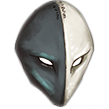The most versatile method for deactivating traps is the Disable a Device action of the Thievery skill, though most mechanical traps can also simply be smashed, and magical traps can usually be counteracted. Environmental hazards often can be overcome with Nature or Survival, and haunts can often be overcome with Occultism or Religion. The specific skill and DC required to disable a hazard are listed in the hazard's stat block. Like using Disable a Device, using these skills to disable a trap is a 2-action activity with the same degrees of success, though the activity might have different traits determined by the GM. As with detecting a hazard, disabling a hazard might require a character to have a certain proficiency rank in the listed skill.
A character must first detect a hazard (or have it pointed out to them) to try to deactivate it. They can attempt to deactivate a hazard whether or not it has already been triggered, though some hazards no longer pose a danger once their reactions have occurred, especially if there is no way for them to be reset.
For most hazards, a successful check for the listed skill against the DC in the stat block disables the hazard without triggering it. Any other means of deactivating the hazard are included in the hazard's stat block, as are any additional steps required to properly deactivate it. A critical failure on any roll to disable a hazard triggers it, including a critical failure on a roll to counteract a magical hazard.
Some hazards require multiple successful checks to deactivate, typically because they have a particularly complicated component or have several discrete portions. For hazards with a complex component, a critical success on a check to disable the hazard counts as two successes on a single component.
Rather than trying to carefully disable a hazard, a character might just smash it. Damaging a mechanical trap or another physical hazard works like damaging objects: the hazard reduces the damage it takes by its Hardness. In most cases, hitting the hazard also triggers it, as explained in Attacking a Hazard below. If a hazard's Hit Points are reduced to its Broken Threshold (BT) or lower, the hazard becomes broken and can't be activated, though it can still be repaired. If it's reduced to 0 HP, it's destroyed and can't be repaired. (See Player Core 269 for more information on damaging objects.)
Hazards' AC, applicable saving throw modifiers, Hardness, HP, and BT are listed in their stat blocks. A hazard that doesn't list one of these statistics can't be affected by anything targeting that statistic. For example, a hazard that has HP but no BT can't be broken, but it can still be destroyed. Hazards are immune to anything an object is immune to unless specifically noted otherwise, and they can't be targeted by anything that can't target objects. Some hazards may have additional immunities, as well as resistances or weaknesses.
If someone hits a hazard—especially if it’s a mechanical trap—they usually trigger it, though you might determine otherwise in some cases. An attack that breaks the hazard might prevent it from triggering, depending on the circumstances. If the hazard has multiple parts, breaking one part might still trigger the trap. For example, if a trap has a trip wire in one location and launches an attack from another location, severing the trip wire could still trigger the attack. Destroying a trap in one blow almost never triggers it. These rules also apply to most damaging spells or other effects in addition to attacks.
You might allow a character to repair a damaged hazard to restore its functionality. You determine the specifics of this, since it can vary by trap. The Repair action might be insufficient if fixing the trap requires gathering scattered components or the like. If the item has a Reset entry, the character needs to do whatever is listed there, in addition to repairing the damage.
Some magical hazards can be counteracted using dispel magic and the counteracting rules (Player Core 303). These hazards’ spell ranks and counteract DCs are listed in their stat block. Counteracting a hazard otherwise works like using a skill check to disable the hazard.
 Licenses
Sources
Licenses
Sources
 Contact Us
Contributors
Support the Archives
Maximize Menu
Contact Us
Contributors
Support the Archives
Maximize Menu
 Licenses
Sources
Licenses
Sources
 Contact Us
Contributors
Support the Archives
Contact Us
Contributors
Support the Archives









